Correlation between Soil Structural Parameters and Soil Adhesion Based on Water Film Theory
Abstract
1. Introduction
2. Soil Sample and Experiment Design
2.1. Soil Sample
2.2. Experiment Device
2.3. Experiment Program
- The test soil was formulated with water and soil in a certain proportion, mixed well, and placed in an aluminum box. Then, the test sample was covered with plastic wrap and stored for 12 h to ensure that the soil moisture content was uniform;
- The test soil was compacted in an experimental container, and the external medium was placed above the test soil and allowed to stand for 30 s. Then, marbles were added to the plastic bucket, and the marbles were removed when the weight at the surface of the soil sample was isolated. The adhesive force was calculated according to the mass sum of the bucket and marbles;
- The test soil was dried in a blast dryer at 105 °C and removed after 8 h to calculate the moisture;
2.4. Selection of Soil Moisture Content Measuring Points
3. Analysis of Experiment Results
4. Discussion
4.1. Fractal Characteristics of Soil Particle
4.2. Relationship between Fractal Dimension and Soil Moisture Content
4.3. Correlation between Fractal Dimension and Adhesive Force
4.4. Correlation between Particle Composition and Adhesive Force
4.5. Effect of Soil Particle Size on Soil Water-Holding Capacity
5. Conclusions
- The soil adhesion changed in the same way, but the moisture required for reaching the final limit of the soil adhesion was different. In all soil types, there were significant effects of the fractal dimension and soil particle composition on the coefficient of soil adhesion at the probability level of 0.5%–1%. The larger the fractal dimension was, the more moisture required for the adhesive force to reach a peak, indicating a positive correlation;
- The analysis of the correlation between soil parameters and soil adhesive force showed that the correlation between the fractal dimension of particles and adhesive force were highly significant. The greater the fractal dimension of particles was, the higher the soil adhesion. The clay content in the soil was highly significant and positively correlated with adhesive force. The soil clay content had a decisive influence on the fractal dimension and was also a key factor affecting soil adhesion. Therefore, it is feasible to determine and analyze the adhesive force based on the changes in the fractal dimension and the percentage of clay content in soil samples.
Author Contributions
Funding
Institutional Review Board Statement
Informed Consent Statement
Data Availability Statement
Conflicts of Interest
References
- Ren, L.; Tong, J.; Li, J.; Chen, B. SW-Soil and Water: Soil Adhesion and Biomimetics of Soil-engaging Components: A Review. J. Agric. Eng. Res. 2001, 79, 239–263. [Google Scholar] [CrossRef]
- Abbaspour-Gilandeh, Y.; Hasankhani-Ghavam, F.; Shahgoli, G.; Shrabian, V.R.; Abbaspour-Gilandeh, M. Investigation of the Effect of Soil Moisture Content, Contact Surface Material and Soil Texture on Soil Friction and Soil Adhesion Coefficients. ACTA Technol. Agric. 2018, 21, 44–50. [Google Scholar] [CrossRef]
- Jia, X. Theoretical Analysis of the Adhesion Force of Soil to Solid Materials. Biosyst. Eng. 2004, 87, 489–493. [Google Scholar] [CrossRef]
- Tong, J.; Ren, L.; Chen, B.; Qaisrani, A.R. Characteristics of adhesion between soil and solid surfaces. J. Terramech. 1994, 31, 93–105. [Google Scholar] [CrossRef]
- Burbaum, U.; Sass, I. Physics of adhesion of soils to solid surfaces. Bull. Eng. Geol. Environ. 2017, 76, 1097–1105. [Google Scholar] [CrossRef]
- Marani, S.M.; Shahgholi, G.; Moinfar, A. Effect of nano coating materials on reduction of soil adhesion and external friction. Soil Till. Res. 2019, 193, 42–49. [Google Scholar] [CrossRef]
- Haines, W.B. Studies in the physical properties of soil. I. Mechanical properties concerned in cultivation. J. Agric. Sci. 1925, 15, 178–200. [Google Scholar] [CrossRef]
- Tyler, S.W.; Wheatcraft, S.W. Fractal scaling of soil particle-size distribution: Analysis and limitations. Soil Sci. Soc. Am. J. 1992, 56, 362–369. [Google Scholar] [CrossRef]
- Perfect, E.; Kay, B.D. Applications of fractals in soil and tillage research: A review. Soil Till. Res. 1995, 36, 1–20. [Google Scholar] [CrossRef]
- Fountaine, E.R. Investigations into the mechanism of soil adhesion. Eur. J. Soil Sci. 1954, 5, 251–263. [Google Scholar] [CrossRef]
- Konishchev, V.N. Cryogenic weathering. In Proceedings of the Tr. Inter. Conferences on Permafrost studies, Yakutsk, Russia, September 1973. [Google Scholar]
- Sergeev, E.M.; Minervin, A.V. New Data for Solving the Loess Problem. Izv. USSR Acad. Sci. Ser. Geol. 1964, 9, 53–64. [Google Scholar]
- Tyler, S.W.; Wheatcraft, S.W. Application of fractal mathematics to soil water retention estimation. Soil Sci. Soc. Am. J. 1989, 53, 987–996. [Google Scholar] [CrossRef]
- Anderson, A.N.; McBratney, A.B.; Crawford, J.W. Applications of Fractals to Soil Studies. Adv. Agron. 1997, 63, 1–76. [Google Scholar] [CrossRef]
- Arya, L.M.; Paris, J.F. A physicoempirical model to predict the soil moisture characteristic from particle-size distribution and bulk density data. Soil Sci. Soc. Am. J. 1981, 45, 1023–1030. [Google Scholar] [CrossRef]
- Turcotte, D.L. Fractals and fragmentation. J. Geophys. Res. 1986, 91, 1921–1926. [Google Scholar] [CrossRef]
- Ghanbarian, B.; Daigle, H. Fractal dimension of soil fragment mass-size distribution: A critical analysis. Geoderma 2015, 245-246, 98–103. [Google Scholar] [CrossRef]
- Ratner, B. The correlation coefficient: Its values range between +1/−1, or do they? J. Target. Meas. Anal. Mark. 2009, 17, 139–142. [Google Scholar] [CrossRef]
- Schober, P.; Boer, C.; Schwarte, L.A. Correlation Coefficients: Appropriate Use and Interpretation. Anesth. Analg. 2018, 126, 1763–1768. [Google Scholar] [CrossRef] [PubMed]
- Hryniewicz, O. Statistical properties of the fuzzy p-value. Int. J. Approx. Reason. 2018, 93, 544–560. [Google Scholar] [CrossRef]
- McFarlane, J.S.; Tabor, D. Adhesion of Solids and the Effect of Surface Films. Proc. R. Soc. London. Ser. A Math. Phys. Sci. 1950, 202, 224–243. [Google Scholar] [CrossRef]
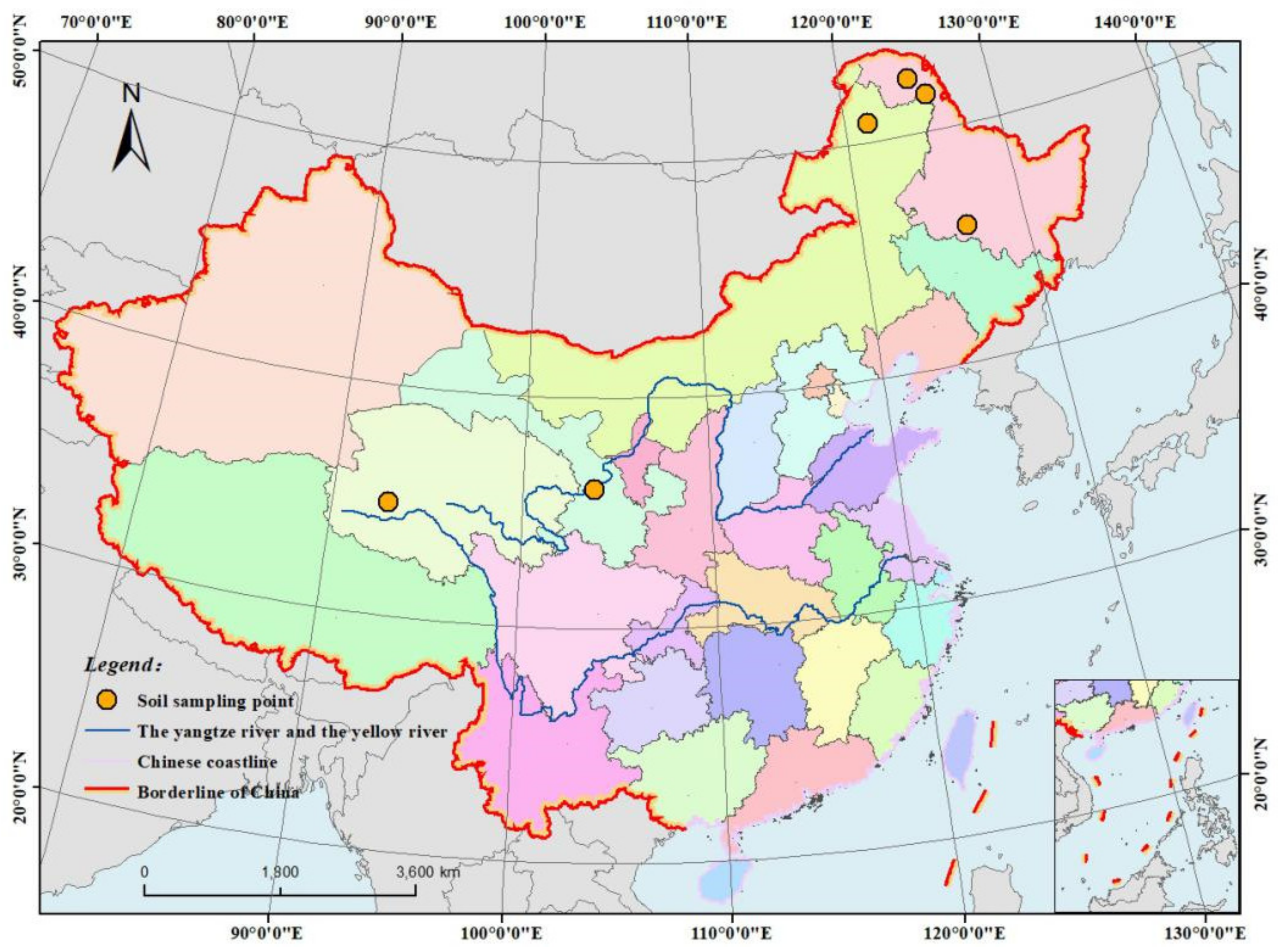


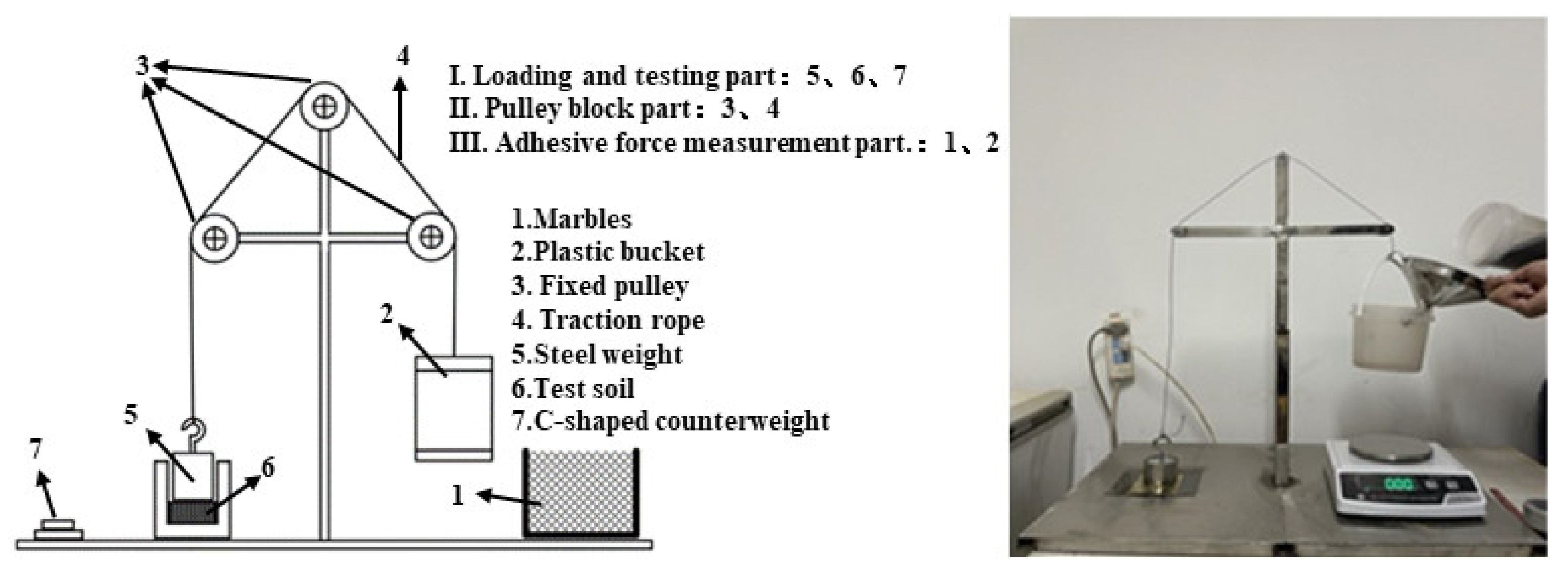
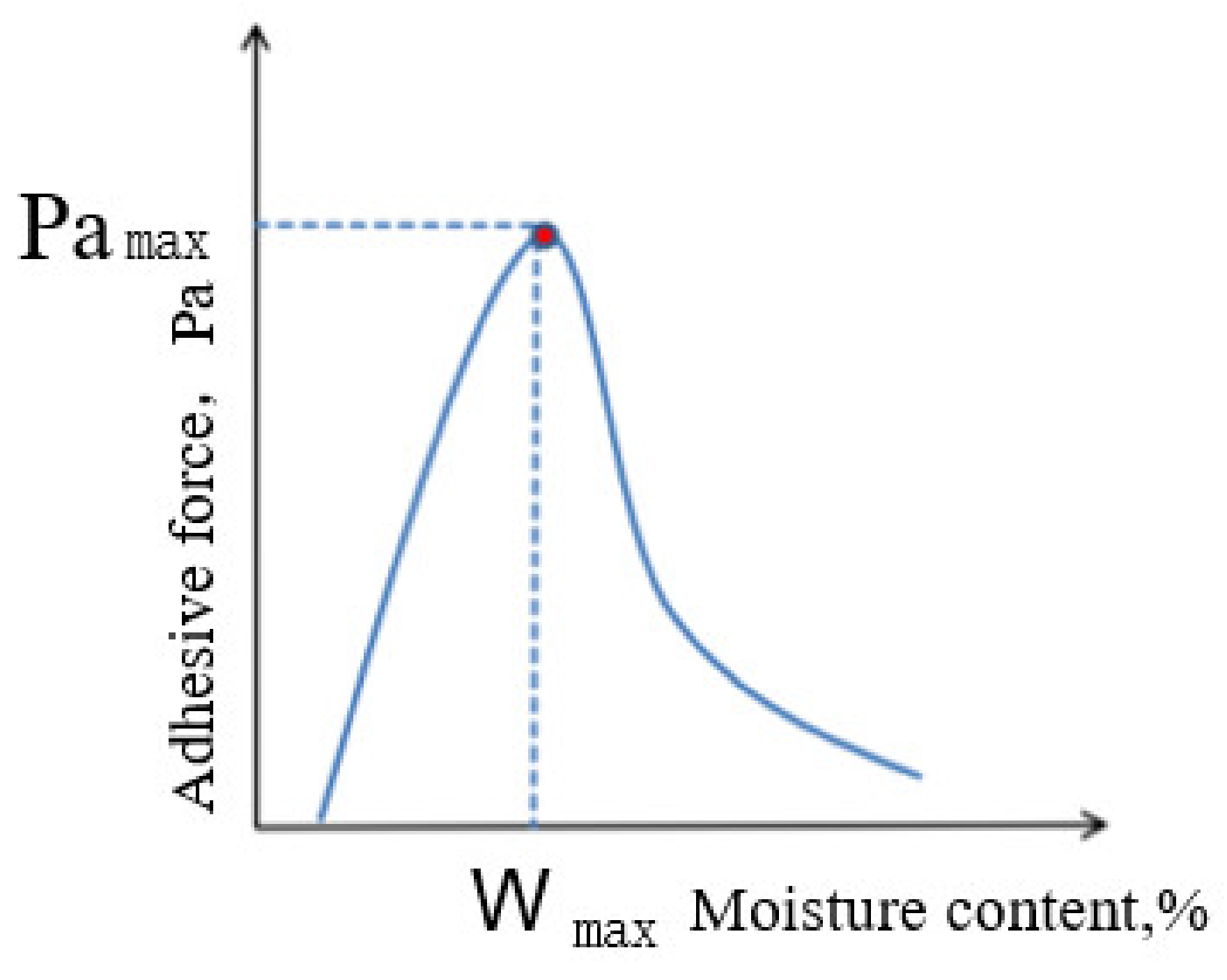
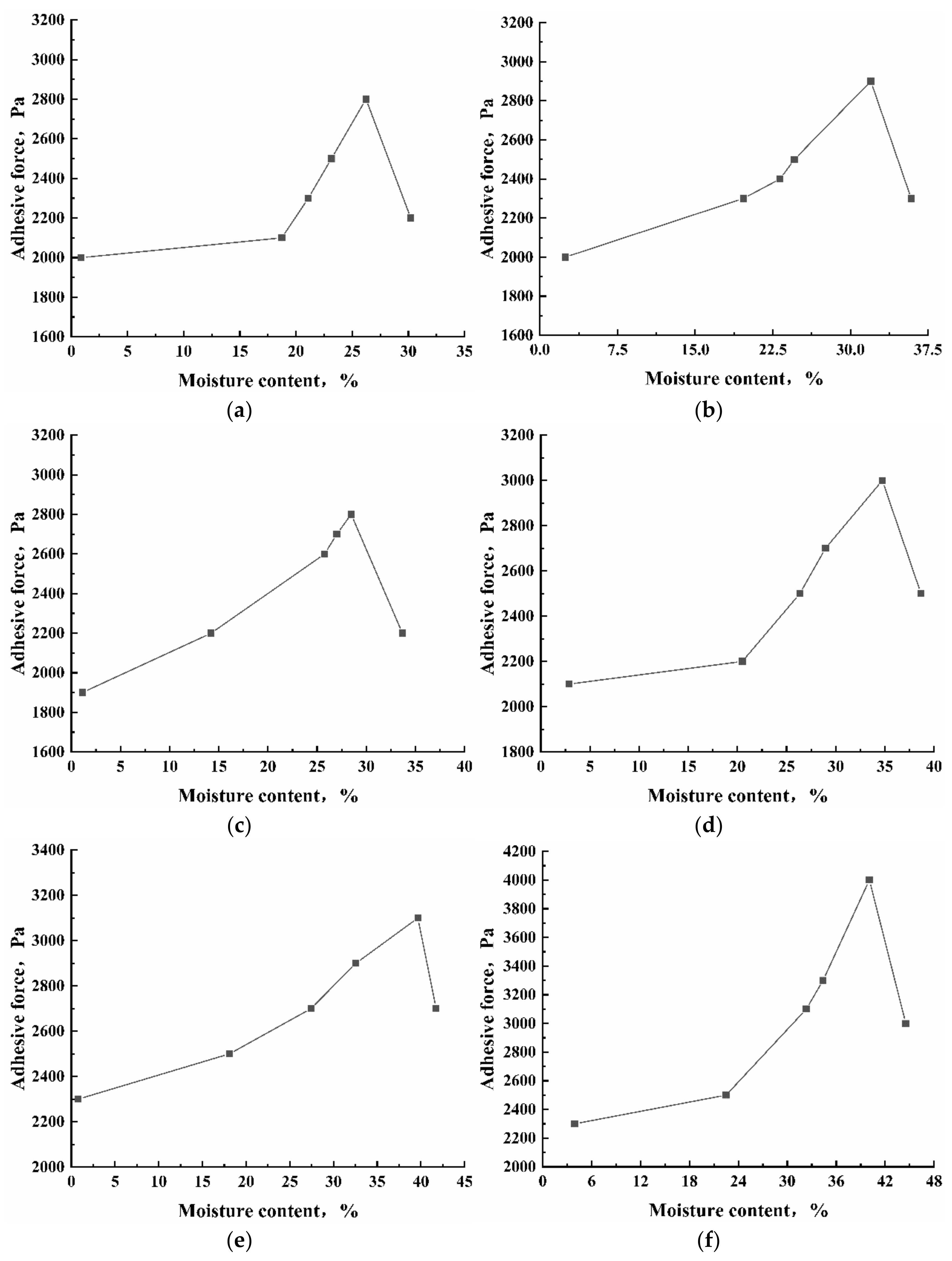


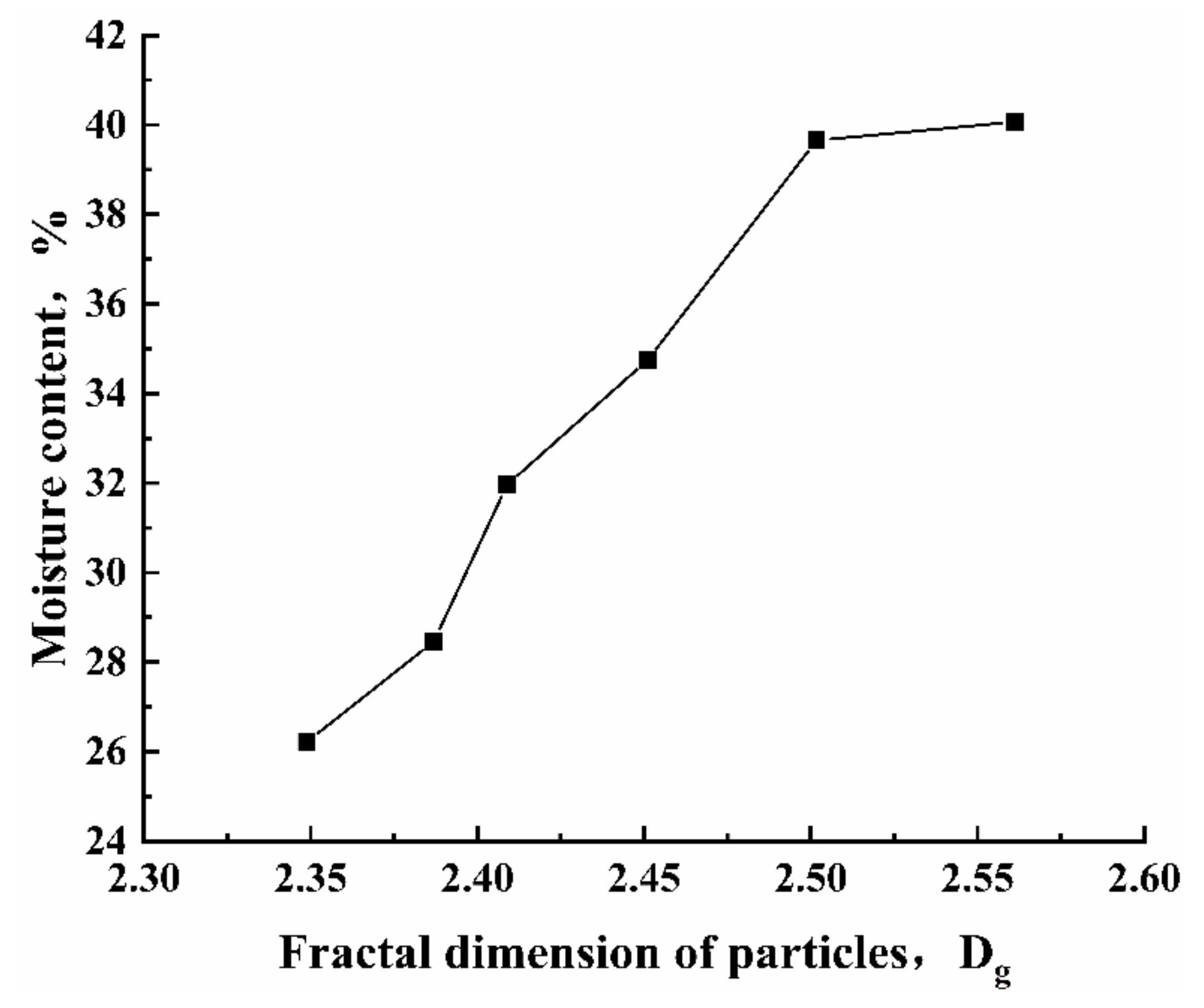

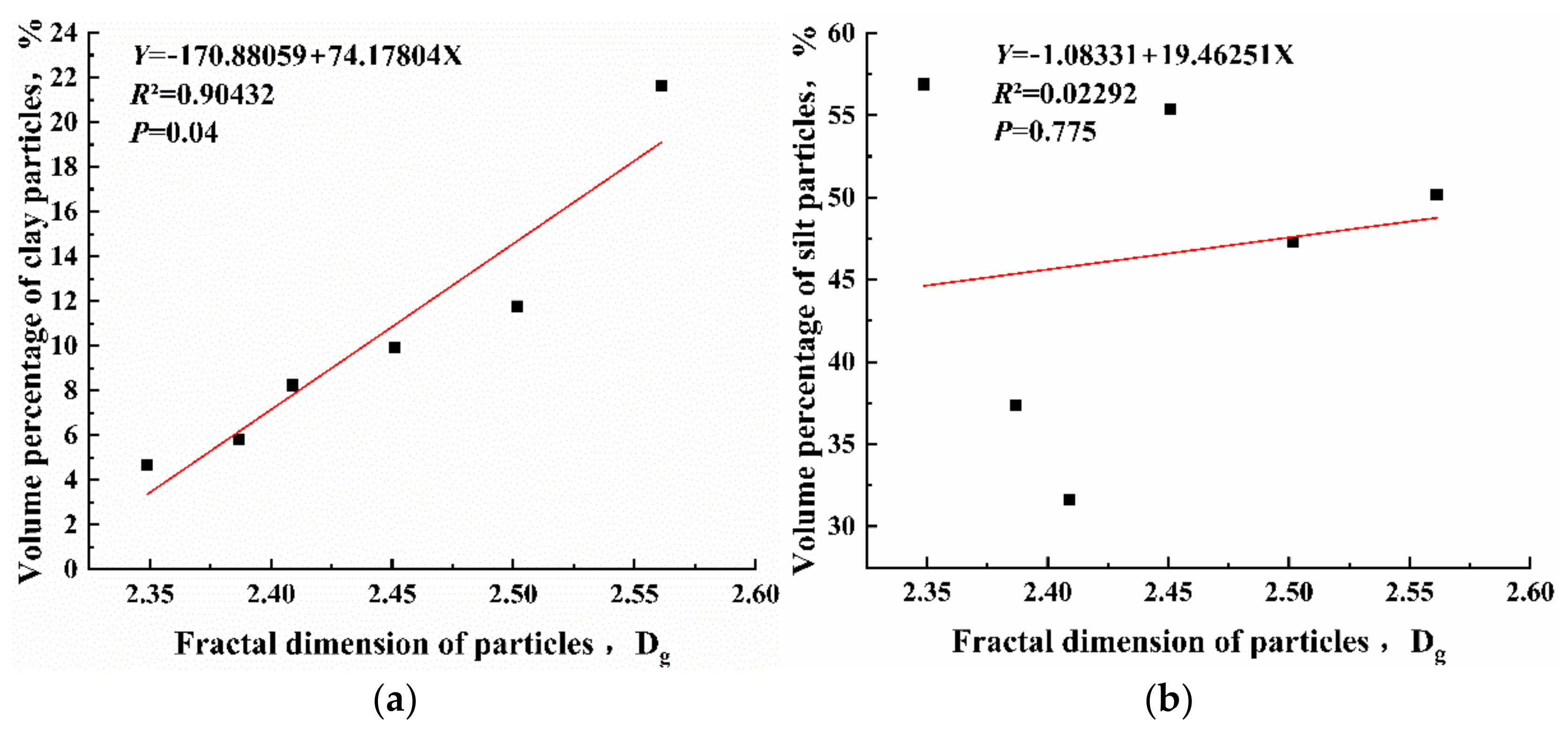


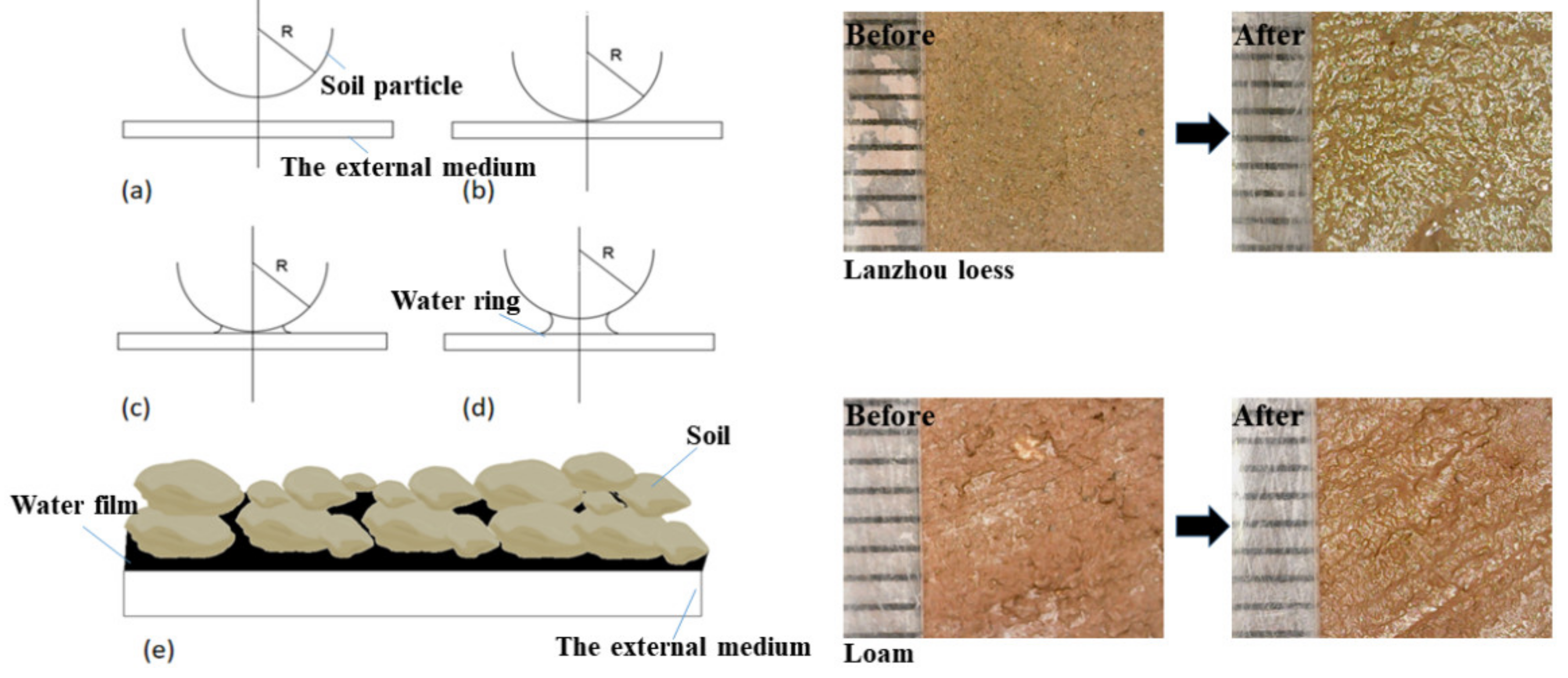
| Serial Number | Soil Name | Latitude and Longitude | Area | Soil Clay Content (%) |
|---|---|---|---|---|
| a | Lanzhou loess | 103.84592, 36.03645 | Lanshan, Lanzhou city | 4.66 |
| b | Songling soil | 125.67321, 51.53148 | Huli mountain, Greater Khingan range | 5.83 |
| c | Tahe soil | 124.71008, 52.33428 | Tahe county, Greater Hinggan mountains | 8.24 |
| d | Harbin clay | 126.48067, 45.79857 | Harbin | 9.93 |
| e | Loam | 92.944079, 34.891631 | Beilu river in Qinghai–Tibet Plateau | 11.77 |
| f | Genhe red clay | 121.538076, 50.778943 | Genhe city | 21.62 |
Publisher’s Note: MDPI stays neutral with regard to jurisdictional claims in published maps and institutional affiliations. |
© 2022 by the authors. Licensee MDPI, Basel, Switzerland. This article is an open access article distributed under the terms and conditions of the Creative Commons Attribution (CC BY) license (https://creativecommons.org/licenses/by/4.0/).
Share and Cite
Li, H.; Zhang, Z.; Zhai, J.; Yang, L.; Long, H. Correlation between Soil Structural Parameters and Soil Adhesion Based on Water Film Theory. Coatings 2022, 12, 1743. https://doi.org/10.3390/coatings12111743
Li H, Zhang Z, Zhai J, Yang L, Long H. Correlation between Soil Structural Parameters and Soil Adhesion Based on Water Film Theory. Coatings. 2022; 12(11):1743. https://doi.org/10.3390/coatings12111743
Chicago/Turabian StyleLi, Hang, Ze Zhang, Jinbang Zhai, Linzhen Yang, and Haichao Long. 2022. "Correlation between Soil Structural Parameters and Soil Adhesion Based on Water Film Theory" Coatings 12, no. 11: 1743. https://doi.org/10.3390/coatings12111743
APA StyleLi, H., Zhang, Z., Zhai, J., Yang, L., & Long, H. (2022). Correlation between Soil Structural Parameters and Soil Adhesion Based on Water Film Theory. Coatings, 12(11), 1743. https://doi.org/10.3390/coatings12111743







